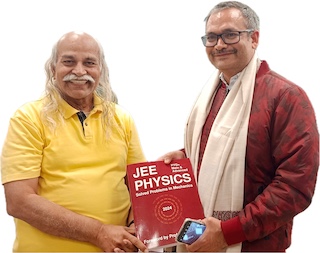Centre of Mass by Balancing the Scale
The centre of mass of a body is the point at which it can be balanced. There are many methods to find centre of mass of a body. The centre of mass of a rod can be determined by holding it on two fingers and then moving the fingers inwards. The fingers meet at the centre of mass. For a uniform rod, the centre of mass lies at its geometrical centre (mid point) but that is not the case for a non-uniform rod.
Procedure
Support a meter stick horizontally with two fingers (of two hands). Slide your fingers in and they will both meet at the center of mass. To explain this, you need to understand friction and equilibrium. In static equilibrium, net force and net torque on the scale is zero.
Give scale to a volunteer. Hold the scale horizontal by placing finger of one hand below one end of metre scale and finger of another hand below the mid point of scale. Ask him to move the finger at the end of the scale. It is easy do so. Now ask him to move the finger at the mid-point. He is unable to do so. Why?
Discussion
The stick is in equilibrium. The net force and net torque on the stick is zero. The forces acting on the scale are gravitational pull \(mg\), and reactions forces from two fingers, say \(N_1\) and \(N_2\). Let fingers are at distances \(x_1\) and \(x_2\) from the centre of mass. In equilibrium, \(N_1+N_2=mg\) and \(N_1 x_1=N_2 x_2\). These conditions give more reaction force on the finger which is close to the centre of mass. Thus, frictional force on this finger is more as compared to the other finger. Thus, when you start moving the fingers, the finger which is far away from the centre of mass starts moving first.
Variant: Centre of Mass - Game
Related
Subscribe to our channel
